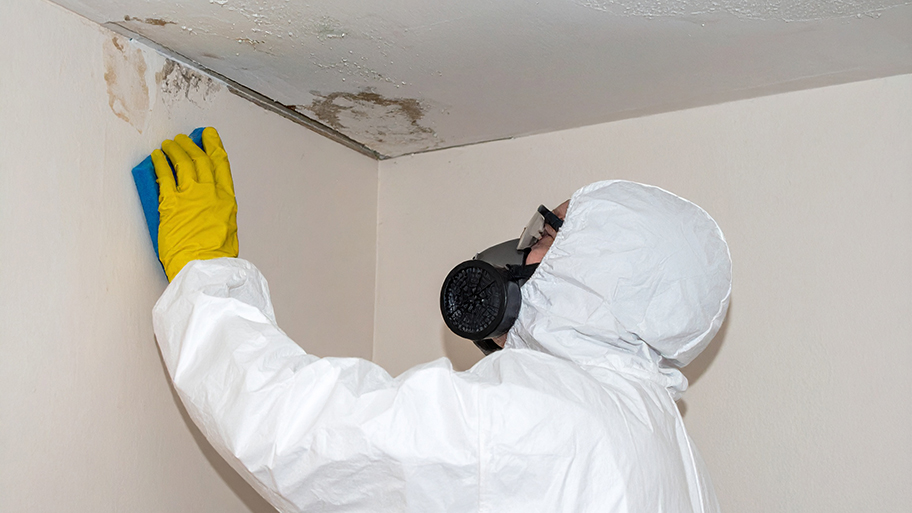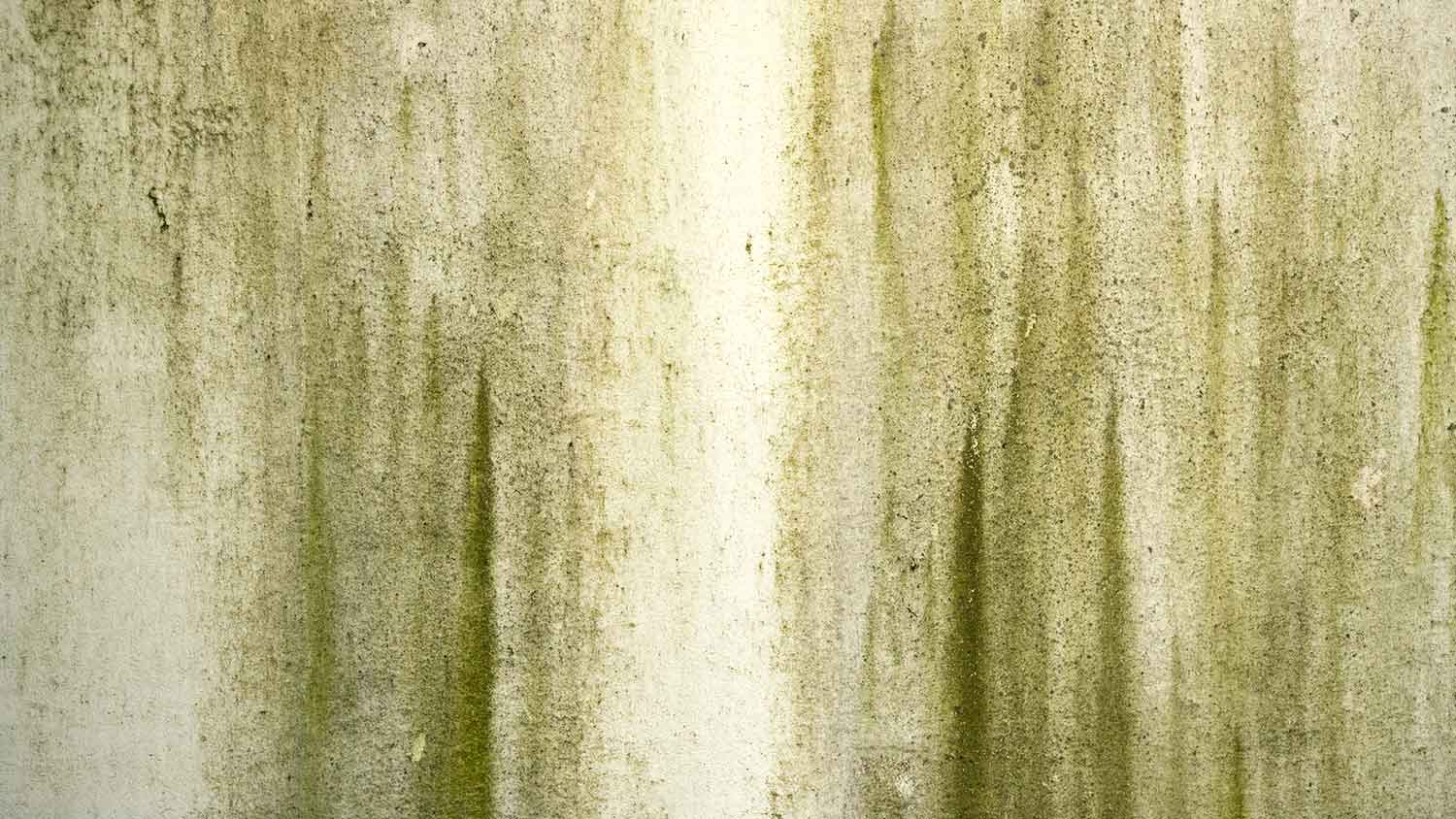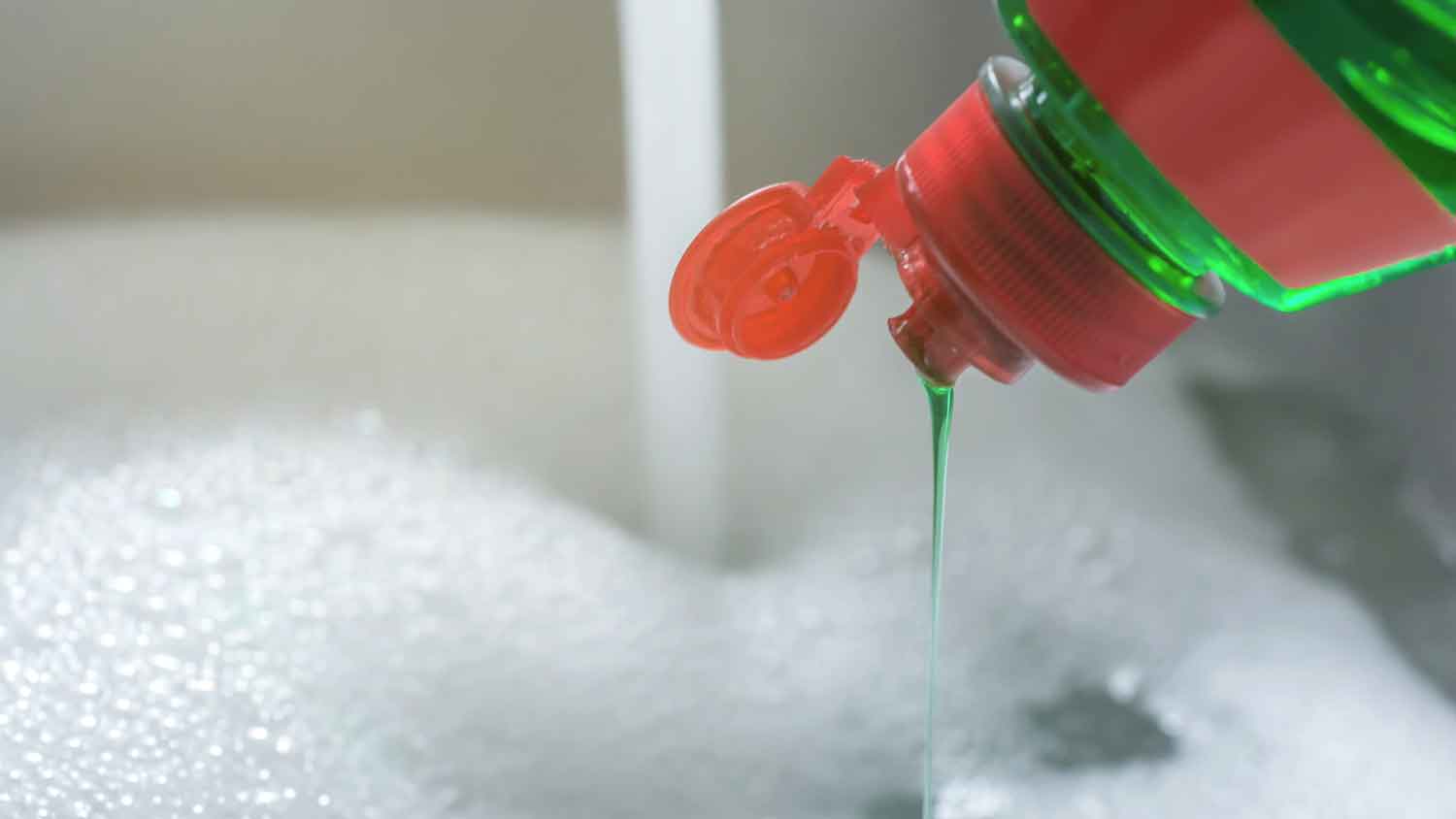
Mold remediation cost can quickly escalate. But if you have mold in your home, the cost for mold remediation is worth it.
Keep your concrete spaces pristine


Concrete surfaces are not immune to mold infestations, which can grow relentlessly and pose both aesthetic and health concerns in areas like basements, garages, and outdoor walkways. To combat this problem, there are several potential methods available to remove mold from concrete surfaces. Whether you're a homeowner facing a small-scale issue or dealing with larger areas, these methods offer practical and actionable steps for eliminating mold and reclaiming your concrete spaces.
When moisture is absorbed and retained on concrete, it creates an environment where mold spores can thrive. Contributing factors such as poor ventilation, high humidity, and water leaks increase the likelihood of mold growth. Concrete surfaces that receive limited sunlight and airflow are particularly vulnerable to mold colonization.
Organic materials like dirt, dust, or remnants from prior mold growth serve as food sources for mold, allowing it to flourish on concrete. The perfect habitat for mold growth on concrete is created when there is moisture, organic matter, and insufficient airflow, and it's crucial to take preventative measures to regulate moisture and ensure proper ventilation to maintain a dry environment.

Dark or discolored patches of black, green, or brown, and sometimes white, on concrete are often an indication of mold growth. These patches can have a fuzzy or slimy texture and spread if left unattended. Musty odors around concrete surfaces are also signs of mold development. When areas with prolonged dampness, water damage, or poor ventilation are not regularly inspected, they increase the likelihood of mold growth on concrete. To prevent its spread, inspect areas prone to moisture, such as basements, crawl spaces, or outdoor concrete surfaces, to catch early signs of mold growth.
It is important that mold is removed from concrete surfaces to improve their appearance and prevent potential health hazards. For personal safety, it is highly recommended that you don protective equipment–like gloves and a mask–while using mold-removing solutions. Adequate ventilation is necessary in the work area to avoid inhaling hazardous fumes. To prevent any discoloration or harm to the concrete that may require staining the concrete, conduct a patch test of the product on a small, less noticeable area before applying your solution of choice. Below are effective solutions for removing mold from concrete.

A budget-friendly and simple solution for eliminating mold from concrete is dish soap. The first step is to create a mixture of dish soap and water, with the ratio being around one cup of soap for every gallon of water. Apply this solution to the moldy concrete area, and use a stiff brush or broom to vigorously scrub the surface. This action works to dismantle and extract the mold from the concrete. Next, rinse the concrete surface with clean water to remove both the soap and any mold particles.
If you're looking for an eco-friendly and natural solution to remove mold from concrete, vinegar can do the trick. To create a potent mixture, simply mix equal parts of white vinegar and water in a spray bottle. Once ready, spray the affected concrete surface generously with the vinegar solution and let it sit for at least one hour. The acidic properties of vinegar help to break down and eliminate mold. After the designated time, scrub the mold-infested area with a brush or sponge to further loosen the mold. To finish, rinse the concrete thoroughly with water to remove both the vinegar solution and the dislodged mold.
Bleach is a commonly used and effective method for removing mold from concrete due to its strong antimicrobial properties. To use, mix one part bleach with three parts water to create a solution. Apply the solution evenly to the moldy surface and allow it to sit for 10-15 minutes to penetrate and eliminate the infestation. Next, use a stiff brush to scrub the area and remove the mold. To prevent any remaining bleach residue, rinse the concrete thoroughly with water. It is essential to exercise caution when using bleach, as it can discolor the concrete and should only be used in well-ventilated areas with proper protective gear for safety.

Eliminating mold from concrete using ammonia is a highly potent and effective method, but should only be practiced in a well-ventilated space. Mix equal parts of clear ammonia and water to create a cleaning solution and apply it to the moldy concrete surface. Let it sit for approximately 10-15 minutes to break down the mold. Then, scrub the affected area with a brush to remove the loosened mold. It is critical to thoroughly rinse the concrete with water after cleaning to remove any remaining ammonia residue.
Removing mold from concrete can be achieved with great results through the use of a pressure washer. This powerful tool can remove mold from the surface when equipped with an appropriate nozzle and positioned at a safe distance. Before using this tool, pre-treat the affected area with a mild detergent or mold-killing solution to break down the mold and enhance the effectiveness of the pressure washing.
While pressure washing is speedy and can cover a vast area, caution must be exercised to avoid causing any damage to the concrete surface. Protective gear, such as gloves and safety goggles, should be worn as well. Take care to avoid water and mold debris spreading to other surfaces or entering nearby structures. This technique is particularly useful for outdoor concrete surfaces, such as patios and driveways, where water runoff can be effectively managed.
Successful prevention of mold growth on concrete surfaces involves proactive measures to manage moisture levels and maintain cleanliness. Proper drainage around the concrete area is necessary, which can be achieved by installing gutters and downspouts to direct water away from the structure. Any cracks or gaps in the concrete should be promptly addressed to prevent water from entering and creating an ideal environment for mold to thrive. Sealing concrete with a water-resistant sealant or coating to the concrete is also beneficial in reducing water absorption and inhibiting mold growth.
Proper ventilation systems should be in place in enclosed spaces with concrete, such as basements or crawl spaces, to promote air circulation and keep surfaces dry. The use of exhaust fans in high-humidity areas–like bathrooms and kitchens–is also recommended to expel moist air. Regular cleaning and dusting of concrete surfaces can help reduce any organic matter that can serve as a food source for mold. Quickly address any water leaks or spills to prevent prolonged dampness on the concrete, as rapid drying is vital in preventing mold growth. These measures collectively create an environment less conducive to mold proliferation on concrete surfaces.
Removing mold from concrete is a generally simple DIY task handy homeowners can tackle. As long as proper protective gear is worn and adequate ventilation is present when using strong cleaning agents such as bleach or ammonia, DIYing the project can be a cost-effective choice. For homeowners who have already dealt with mold issues and know how to get rid of mold, removing it from concrete is a similar task.
However, if the issue persists or if a large infestation exists, hiring a mold remediation specialist is a smart choice. A professional will not only inspect the mold but can identify the cause of the mold growth. When the cause is identified, recommendations can be given to help homeowners create a plan to remove mold, and prevent its recurrence.
From average costs to expert advice, get all the answers you need to get your job done.

Mold remediation cost can quickly escalate. But if you have mold in your home, the cost for mold remediation is worth it.

The cost of a mold inspection might seem high, but it’s one of the best investments you can make for your health and home. Read on to learn cost-saving tips.

Learn how to tell black mold from black mildew by their look, location, and texture so you can clean it up yourself or know when to call in a pro.

Basement mold is a common problem that can cost thousands of dollars to remove. Use these tips to learn how to prevent mold in a basement.

Figuring out how to test for mold in your home is important. Mold testing can offer peace of mind and lets you know if it’s time to call a pro. Learn about mold testing processes in this guide.

A damp, flood-prone basement is the perfect habitat for mold. Here's how to get rid of mold in your basement and keep it from coming back.